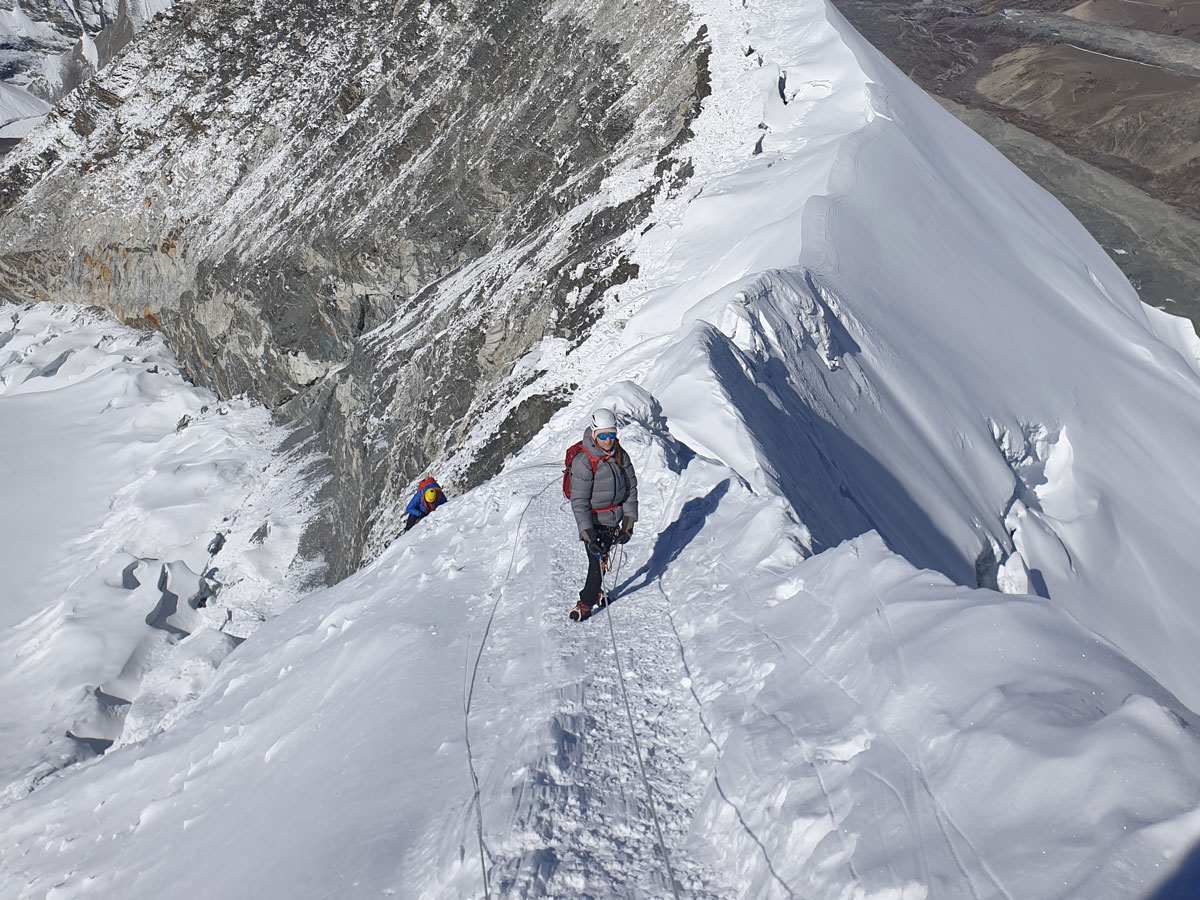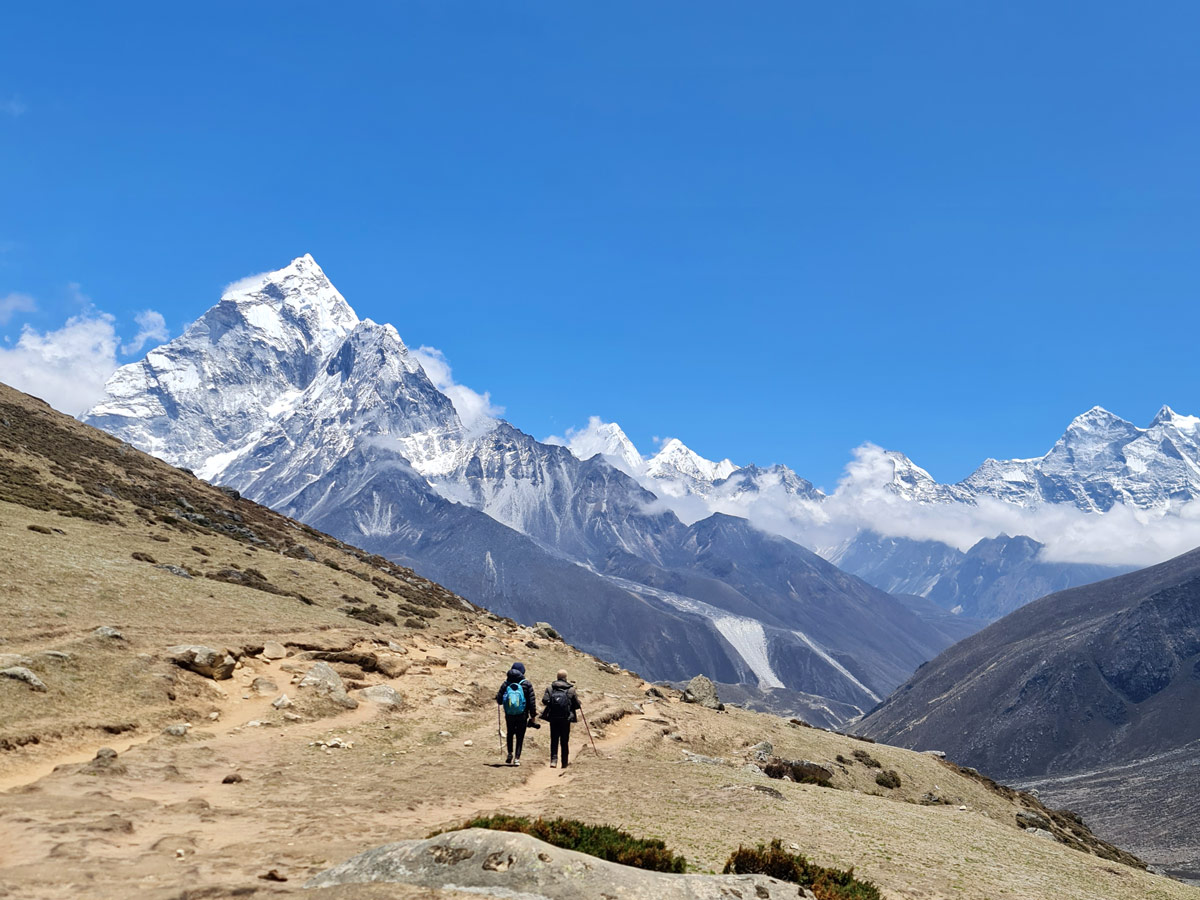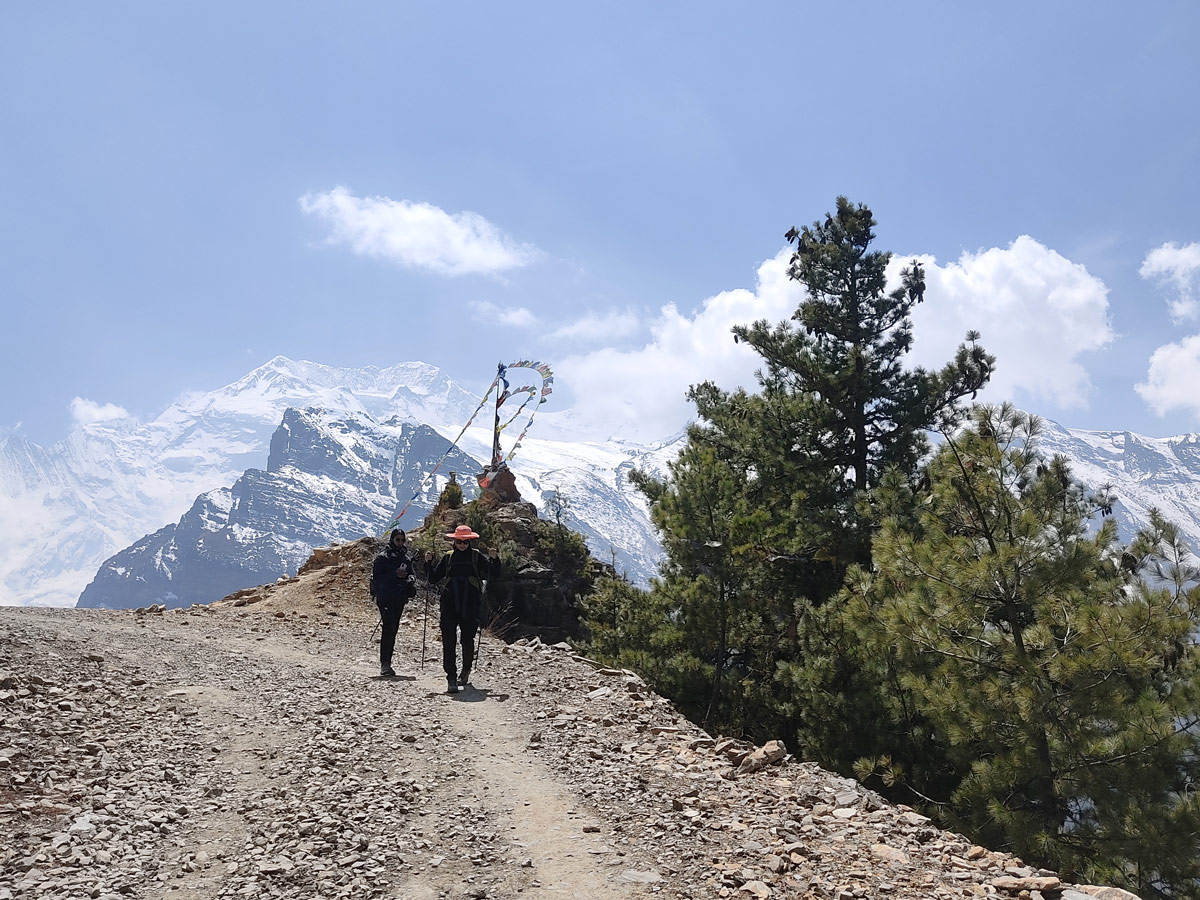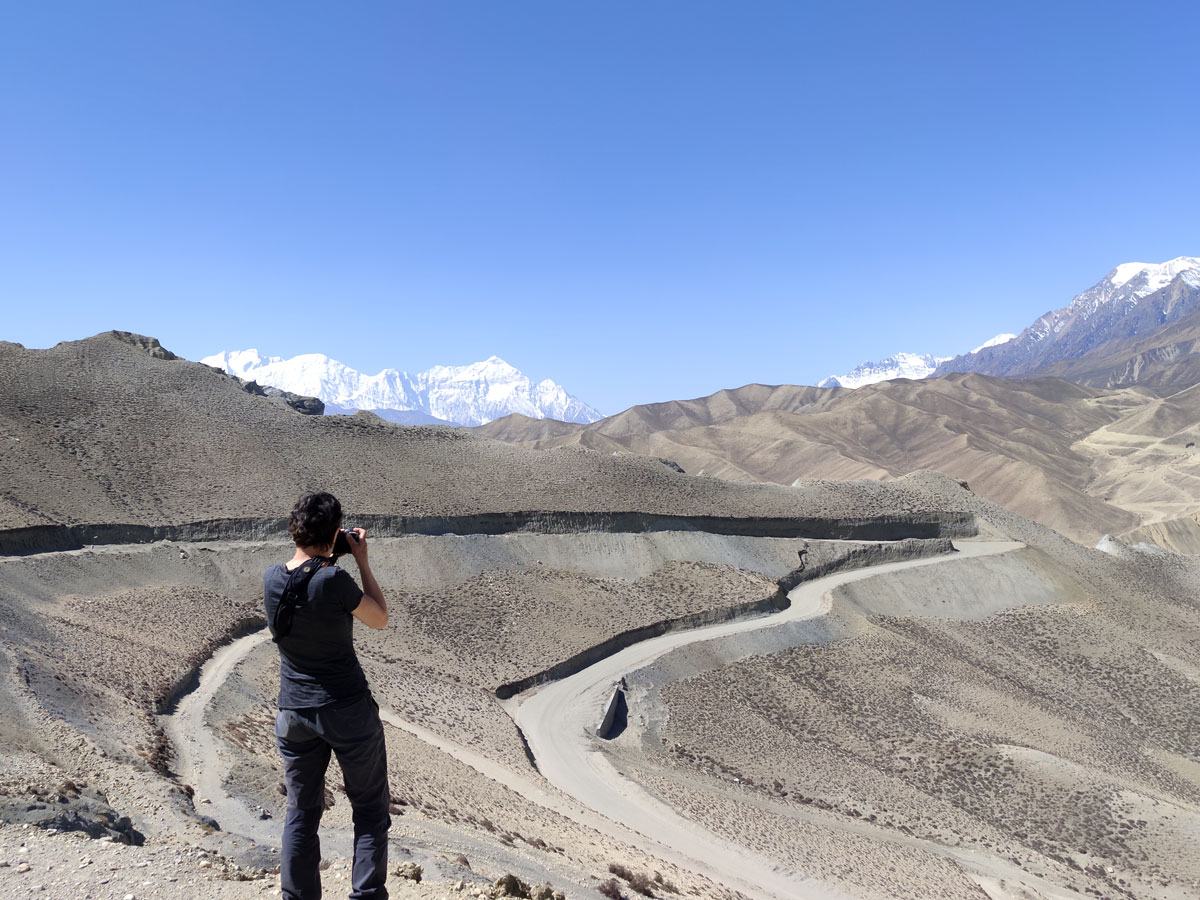The feeling of viewing the world under you as the crisp mountain air hits your face sounds euphoric, doesn’t it? For the same reason, it has been a dream of many people while some have turned it into a reality.
While scaling mountains might seem like a far-fetched fantasy at a cursory glance, it is actually very much possible with just a little bit of training and preparation. And the mountains of Nepal are ready to turn your dream into reality.
If you are a beginner, worry not as the Himalayas feature a variety of options beyond just the challenging 8000-ers. In this blog, we will be discussing such top beginner friendly mountaineering peaks in Nepal.
Why choose Nepal for mountaineering as a beginner?
While there are many options available for mountaineers all across the world for an adventurous expedition ranging from the Andes to the Alps, nothing beats the beauty of the land of the Himalayas which is home to eight of the 14 eight-thousanders of the world.
Although the fame of Nepal in the mountaineering world comes mostly from Mt. Everest, worry not as it is not your only option. Nepal boasts a wide range of peaks suitable for people with any experience level.
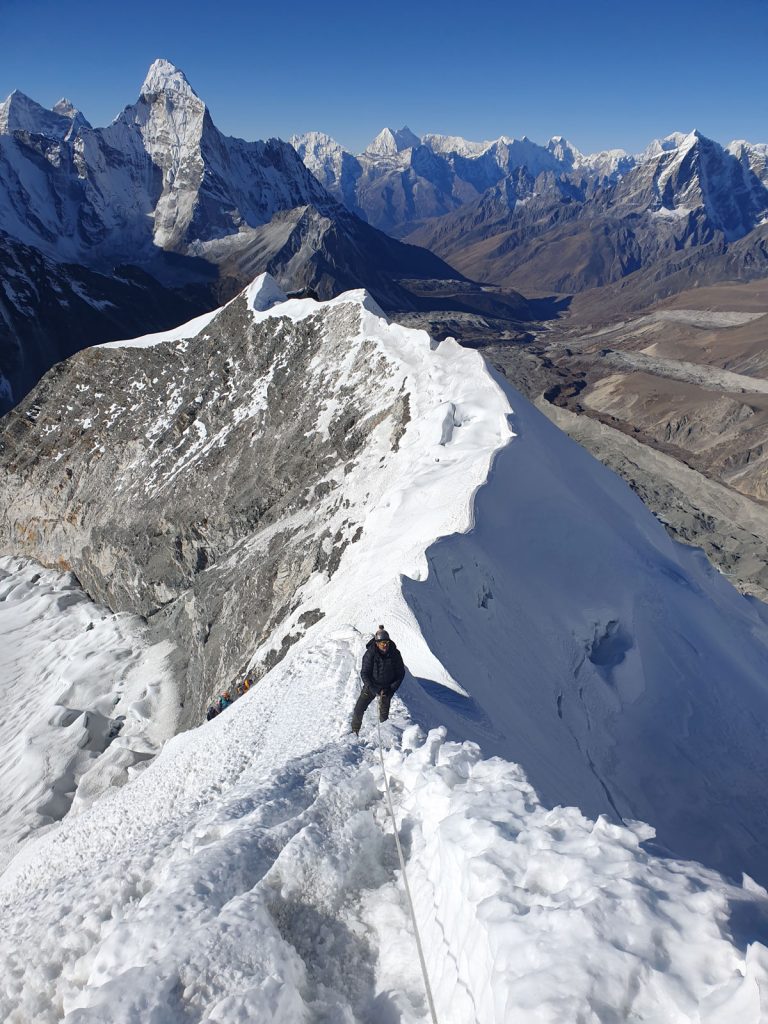
Whether you want to do a non-technical climb and enter the world of mountaineering or you want to add more adventurous peaks to your list of conquered peaks, you will find ample options here.
Besides that, mountaineering in Nepal is beyond just the adventurous experience as it also exposes you to a rich cultural experience where you are treated to a warm local hospitality and culinary delights.
Also, Nepal has had a long history of trekking and mountaineering which is why you will get access to lots of supportive infrastructures to make your journey easier like licensed guides, porters, and you can also get training programs from the Nepal Mountaineering Association (NMA).
What makes a peak beginner-friendly?
Activities like mountain climbing, trekking, and other such Himalayan expeditions are usually taken by adventurous people willing to take a thrilling risk.
We understand that the Himalayas might be alluring and encourage you to push your limits. However, it is best to start with an easier option before tackling the giants.
That is where the beginner-friendly peaks come into play. But what actually makes a peak beginner friendly? And how to differentiate these peaks and find the best pick for you? Well, you can start with the basic criteria.
Always keep in mind the altitude as it is the main factor that determines the success of your mountain adventure. Going for high peaks in the beginning might cause a setback and lead to issues related to altitude sickness.
Therefore, rather than scaling 8000-er in the first attempt, stick to a peak which is less than 7000 m tall, preferably within the altitude range of 5,700 meters to 6,500 meters as they are considered thrilling yet safe.
Besides that, pick for expeditions with less technical sections and go for the straightforward trails. Or else train well in technical skills like ice climbing and using tools like crampons and others for the technical sections.
Also opt for peaks which are comparatively accessible from the main trekking routes so that you can have better access to resources and people in case of emergencies. Always go with guides, porters, and places with local crowds.
Make sure to do your research regarding the safety of the trail and check for the frequency of snowstorms, avalanches, landslides, and any other unfortunate accidents. Pick your adventure wisely.
Yala Peak
Located in the Langtang region of Nepal, the Yala peak is the best option for anyone climbing a mountain for the first time as it stands at a height of 5,732 meters which is not very high for first timers who have trekking experiences.
This is also a relatively short expedition which can be completed within 11 to 13 days as it doesn’t feature any technical sections. The terrain here is pretty straightforward and non-technical making it much more approachable.
Basically, it is the best mountaineering option for people who are just transitioning from trekking into the world of mountaineering. It can be achieved by people with basic level of physical fitness and altitude awareness.
Also, with the minimal technical requirements, this expedition still manages to take you through a scenic delight as you get breathtaking views of Langtang Lirung, lush valleys, glaciers, as well as Shishapangma at 8,013 meters.
While the experience from the stop is stunning, the journey is equally delightful as you will be passing through vantage points like Tserko Ri and getting rich cultural and spiritual experiences at places like Kyanjin Gompa.
You will experience a noticeable transition from lush valleys dotted with flora and fauna to rugged Himalayan landscape. During acclimatization days at the local charming villages, you can also experience the welcoming nature of people.
While this adventure is not very challenging, it is important that you prepare well for the physical challenges which are similar to other high-altitude treks in Nepal.
Island Peak (Imja Tse)
For beginners with a knack for pushing their limits, the Island Peak, locally known as Imja Tse, is a good option located in the Sagarmatha National Park near the iconic Everest Base Camp.
It is a comparatively steeper and tough challenge as you will have to scale an altitude of 6,189 meters. While doing so, you can get a subtle taste of a high-altitude mountaineering challenge, minus the difficult technical sections.
While the peak does feature moderate technical sections, they are manageable with a little knowledge. You will come across sections where you will have to cross glaciers, navigate steep terrains, and learn basic rope-fixing and climbing techniques, and that’s about it.
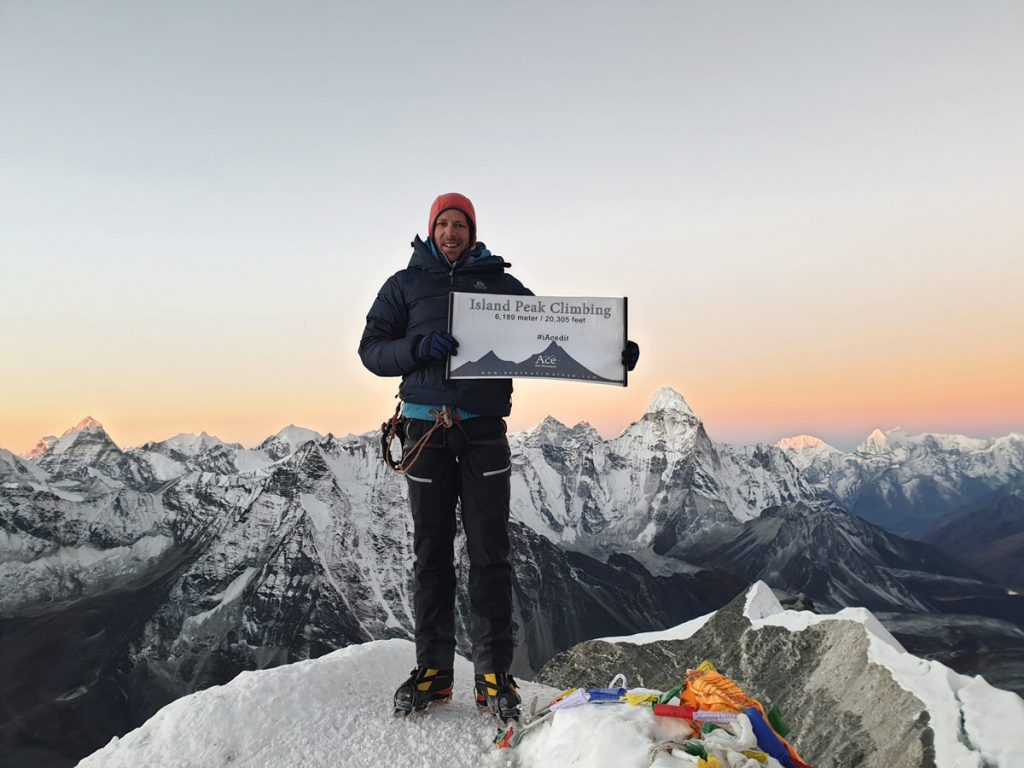
Therefore, climbing the Island Peak is a good choice for both beginners as well as for advanced mountaineers looking for acclimatization options for practice to scale higher peaks like Mt. Everest itself.
The rewards of scaling this peak are also worth it as you get a display of Himalayan giants like Lhotse, Everest, Khumbu icefall, Makalu range, and other surrounding peaks in all their glory. Not to forget, the journey is equally scenic.
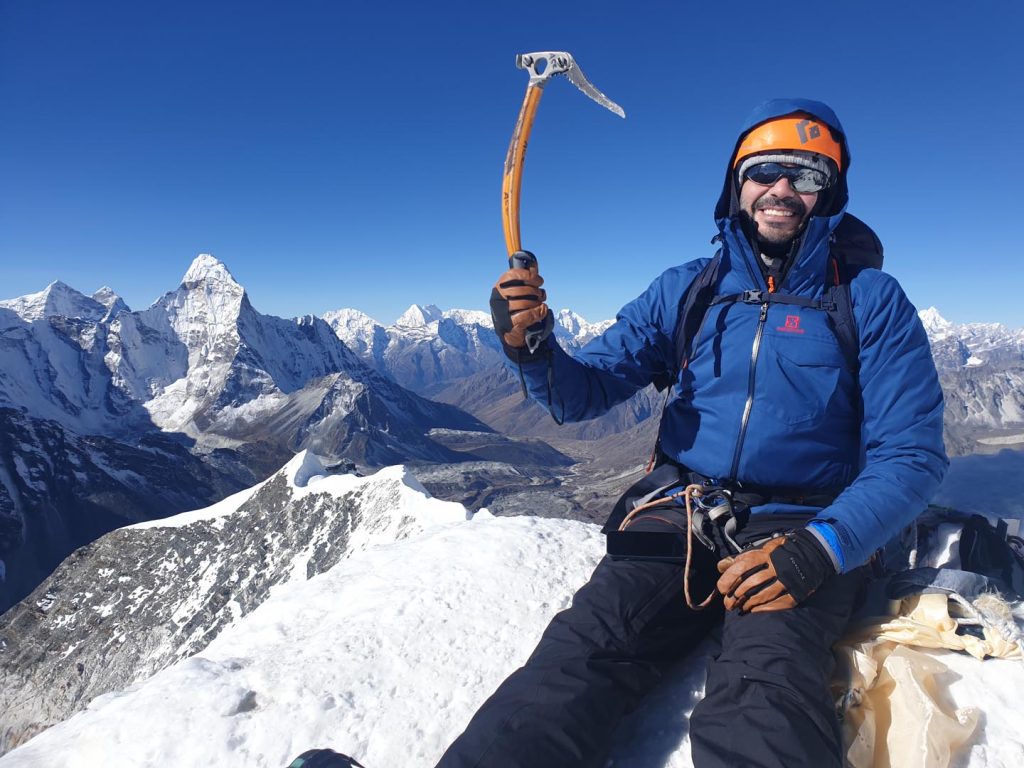
During this expedition of around 11 to 14 days (about 2 weeks), you will be making a stop at many significant and peaceful villages like Namche Bazaar, Dingboche, Tengboche monastery, and also witnessing the lives of Sherpa people firsthand while you stay in the local teahouses along the Everest Base Camp trek.
You can consider it as a mix of trekking and climbing with proper acclimatization stops. It is advisable to learn basic mountaineering skills including snow and ice climbing and rope climbing to complete the Island Peak adventure with much more convenience and confidence.
Mera Peak
Another gem of the Khumbu region, the Mera Peak is the highest trekking peak in Nepal which makes it a must add name to this list. During this expedition, a thirst for challenge and wilderness awaits you.
It takes you to an altitude of 6,476 meters which is a high-altitude experience. However, the trail is not very technical. Therefore, it can be considered a perfect introduction to high-altitude challenge without tackling technical challenges.
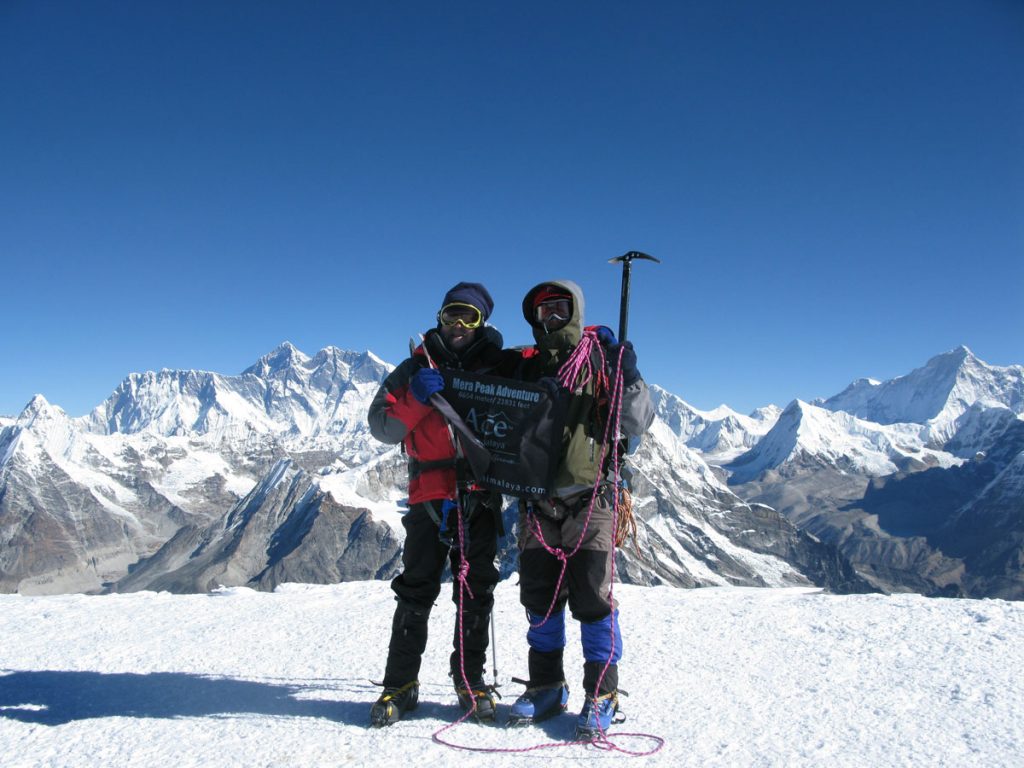
However, it does demand a good level of physical fitness where you should be able to walk for long hours and you will also need to take at least a couple of days for thorough acclimatization.
The trail passes through an off-the-beaten trekking trail in the Everest region as it ventures towards the Khonch Valley before ascending to the steeper mountainous sections.
This trek is completed in around 18 to 20 days generally. But the number of days can change based on your body’s adaptation to the altitude. Once you reach the top of the peak, the views are impeccable.
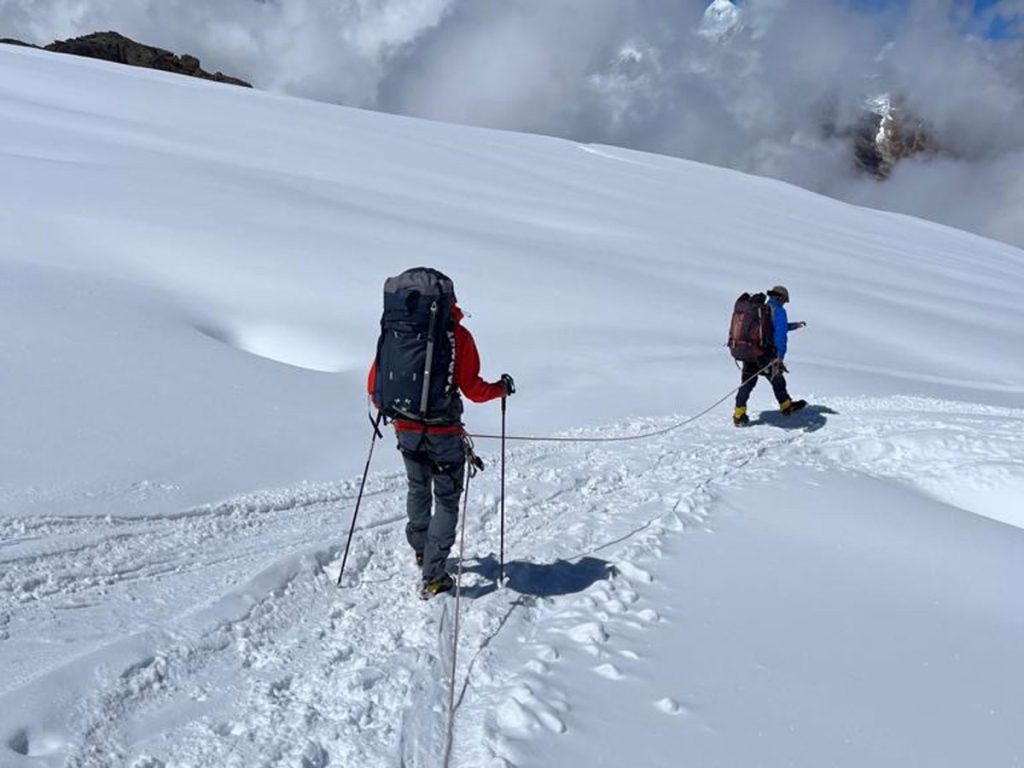
You will get a picture-perfect view of five 8000-ers including Everest, Lhotse, Cho Oyu, Kanchenjunga, and Makalu along with other peaks like Nuptse, Ama Dablam, and the surrounding peaks.
The views will also include a variety of flora and fauna, constantly changing landscapes, lush valleys, and icy glaciers. On the way back, you will also be crossing mountain passes of the Everest region like the Zartwa La Pass.
The journey does have significant physical demands. So, prepare accordingly, especially in terms of physical fitness and endurance training, and also be well equipped to tackle challenges related to temperature.
Lobuche East
Standing tall in the majestic Khumbu region around Mt. Everest, the Lobuche East is also an accessible peak for people with trekking experience and zero to basic mountaineering skills.
However, it is not to be confused with its more famous neighbor- the Lobuche Peak. These are two distinct peaks with challenges of their own. But Lobuche East is the one we will be discussing here.
It is a peak that stands at an altitude of 6,119 meters. Although at an altitude lower than the previous two, this one feature slightly more technical sections which makes it more challenging but equally thrilling too.
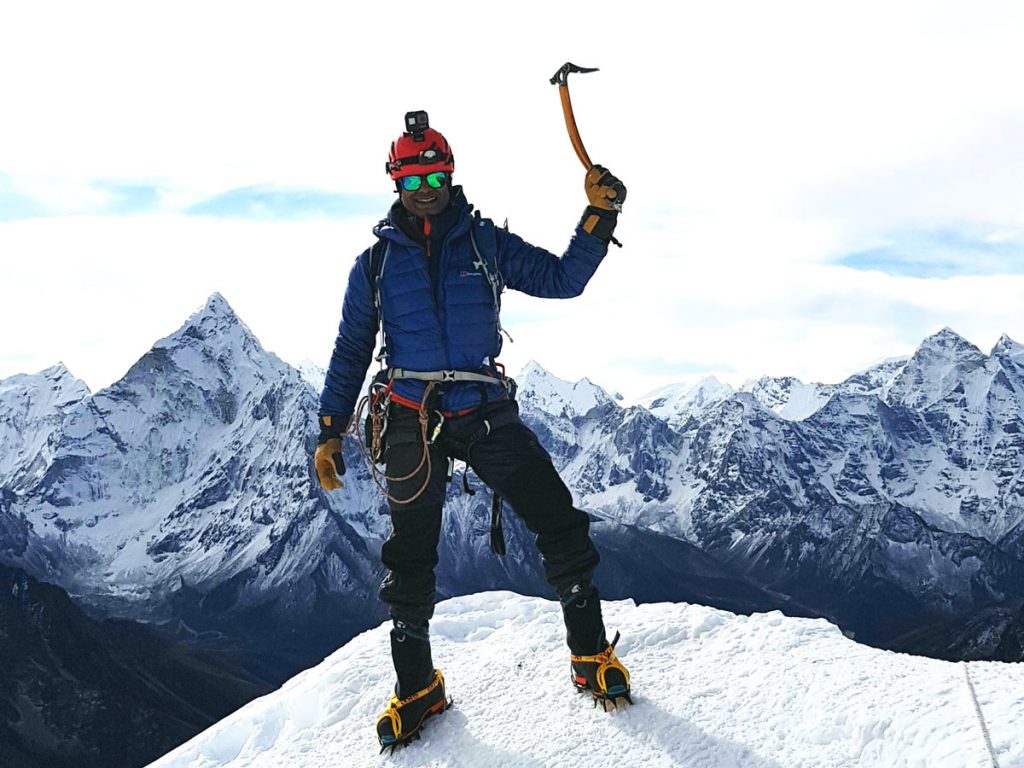
Having said that, these technical sections can be conquered with basic knowledge of ice climbing and using crampons combined with strong cardiovascular endurance and ability to walk for longer hours.
It is advisable to know the basic mountaineering tools and how to use them as they might come in handy during this adventure. Training for rope climbing and ice climbing along with rock climbing can be advantageous for the climb.
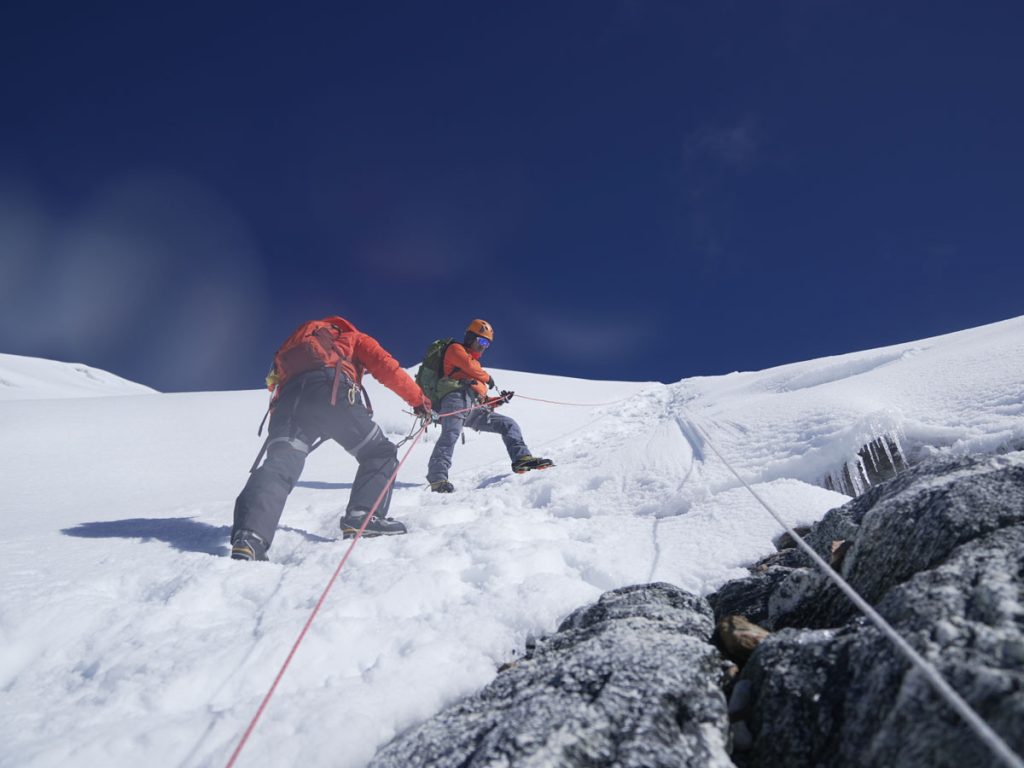
Lobuche East, along with being a thrilling mountaineering expedition, is an excellent vantage point that puts on a scenic display of Mt. Everest, surrounding peaks, and the entire Khumbu region in all its glory.
You will cross a variety of landscapes including lush valleys, icy glaciers, and rocky terrains to witness the beauty of Everest and Khumbu icefall up close. Given the close proximity, you can even combine this expedition with the iconic Everest Base Camp trek.
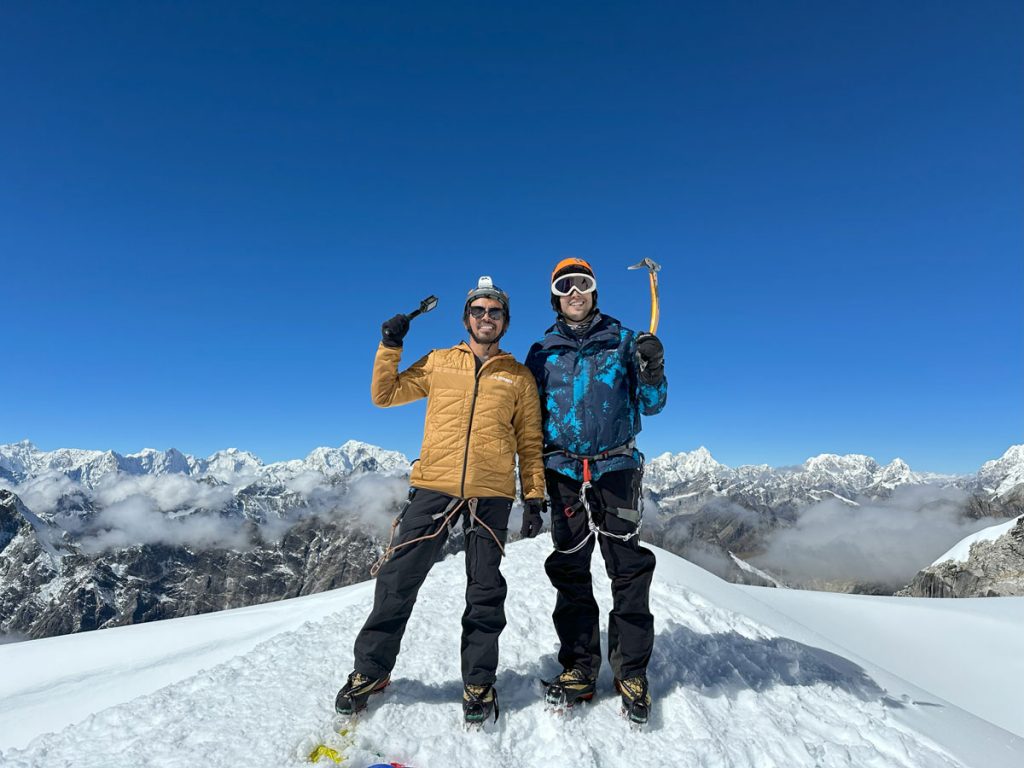
While at it, you can also experience the unique culture and warm hospitality of the Khumbu region during the everyday stops. Make sure to acclimatize well to prevent altitude sickness during the climb spanning 12 to 15 days.
Pisang Peak
Located in the trekker’s paradise, the Annapurna Conservation Area, the Pisang Peak is a convenient yet challenging option for beginners as it takes you to an altitude of 6,091 meters.
This expedition is a great option for people wanting to experience a culturally rich, scenic, and mildly challenging mountaineering expedition. While it takes you to a relatively high altitude, it doesn’t feature many technical sections.
Pisang Peak is accessible from iconic trekking routes like the Annapurna Circuit trek and there is not much risk of avalanches and snowstorms in this region too as it is a tourist hub and a well-managed one at it. Therefore, it is a safe option with access to help if needed.
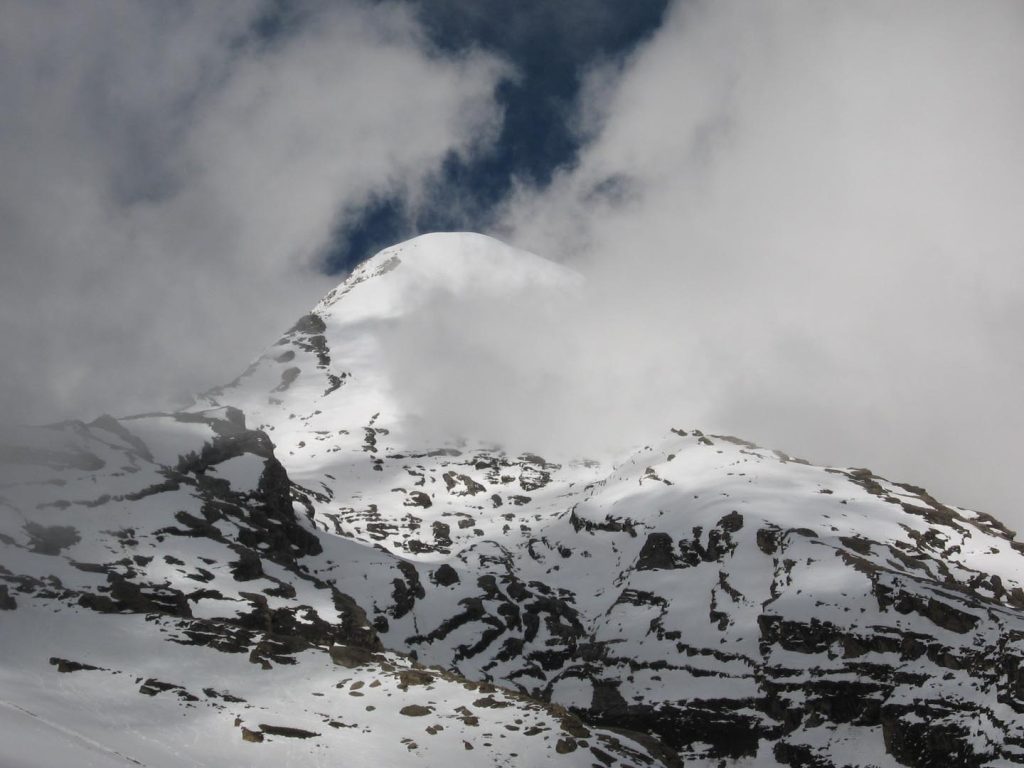
While climbing the Pisang peak, you will also get a taste of the natural beauty of the Annapurna region as you will ascend through the Marshyangdi River Valley, visit the unique Manang valley, and explore Jomsom.
Besides that, your journey will also have a hint of spirituality as you will explore the Muktinath Temple, the ancient Braga monastery, and many other small and big religious sites in the Himalayas of Nepal.
Another reason why you should visit the Annapurna region and go for the Pisang Peak climb is because you will also walk the highest accessible mountain pass in the world at 5,416 meters- the Thorong La Pass which will set the stage for you to reach the top of the peak.
The views from the top of the Pisang Peak display stunning panoramas of the Annapurna region including Annapurna II, IV, and III. Also, this is a less frequented route which allows you to enjoy the adventure thoroughly.
An adventure of 15 to 20 days based on your itinerary; this journey also allows you to experience the cultures of different groups living in the region while also tasting the delicious Thakali cuisine.
The climb is physically demanding, but it is the best option to strike a perfect balance of cultural exploration and mountaineering adventure.
